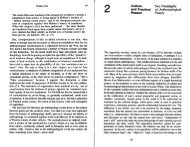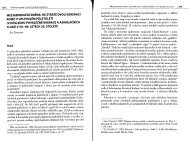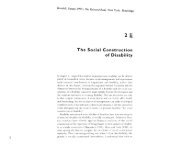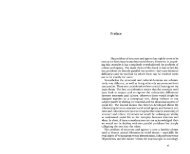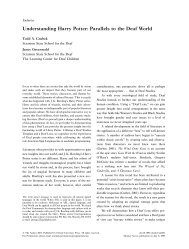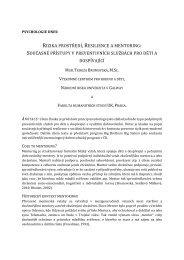Morphogenesis versus Structuration: On Combining ... - Moodle
Morphogenesis versus Structuration: On Combining ... - Moodle
Morphogenesis versus Structuration: On Combining ... - Moodle
You also want an ePaper? Increase the reach of your titles
YUMPU automatically turns print PDFs into web optimized ePapers that Google loves.
<strong>Morphogenesis</strong> <strong>versus</strong> structuration 475<br />
which these failures imply undercuts the claim to have advanced a<br />
superior 'parts-whole' account.<br />
The 'parts-whole' account proffered from the morphogenetic<br />
perspective links structure and interaction in an entirely different<br />
way-the structured whole being understood in terms of the social<br />
processes which articulate relations between individuals and groups.<br />
In contrast to the structuration approach there is investigation of<br />
processes instead of imputation of 'princzples', and identification<br />
of mechanisms in place of the interpolation of 'modalities'. This<br />
account of the whole as a negotiated order is based four-square on<br />
the following assumptions which Giddens barely acknowledges and<br />
grossly underplays:<br />
-interaction generates emergent properties which must figure in<br />
explanatory statements;<br />
-scope is a crucial variable which precludes an undifferentiated<br />
theory covering the micro- and macroscopic;<br />
-the dynamics producing the elaborating the complex whole can<br />
be modelled.<br />
By working through these sequentially I will seek to show not only<br />
that a better 'parts-whole' account results but also one which fulfils<br />
Giddens's desiderata of treating society as consisting of parts in<br />
tension and of understanding the totality as implicated in its parts.60<br />
Emergence is embedded in interaction: in the latter 'we are dealing<br />
with a system of interlinked components that can only be defined in<br />
terms of the interrelations of each of them in an ongoing developmental<br />
process that generates emergent phenomena-including those<br />
we refer to as institutional structure'.6l Emergent properties are<br />
therefore relational: they are not contained in the elements themselves,<br />
but could not exist apart from them. As Blau puts it, 'although<br />
complex social systems have their foundation in simpler ones, they<br />
have their own dynamics with emergent properties'.62 The latter can<br />
arise at all levels from small scale interaction upwards, although as<br />
scope grows they are increasingly distanced from everyday psychological<br />
dispositions but never ultimately detached from interaction.<br />
The highest orders of emergence are nothing more than the relations<br />
between the results of interaction. Nevertheless these 'feed back' to<br />
condition subsequent interaction at lower levels.<br />
It follows that the problem of scope cannot be side-stepped if an<br />
adequate 'parts-whole' account is to be given. In this perspective the<br />
task 'is to specify and conceptualize the processes and mechanisms<br />
by which the more complex and indirect sociative structures or<br />
communication matrices are generated out of less complex, less<br />
indirect and patterned sociative processes-on how the former feed<br />
back to help structure the latter; and on how each may continually<br />
interact to help maintain or to change the other'.63 Thus the first



